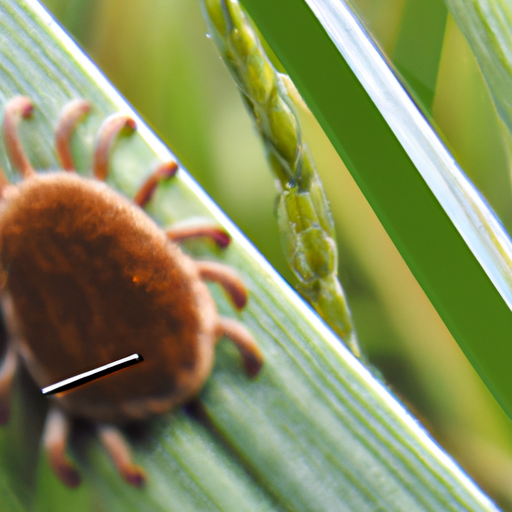Understanding Ticks
Ticks are tiny, blood-sucking parasites that can be found in various environments. Despite their small size, they pose a significant threat to your beloved pets. Ticks don’t spring out of nowhere. They originate from outside environments and latch onto your dogs when they pass through tick-infested areas. They are commonly found in tall grasses, woods, shrubs, and even urban parks.
Be aware, ticks can be active all year round, but they’re especially prevalent during warmer months. As a caregiver, it’s crucial to understand these factors to protect your furry friends effectively.
How Ticks Get Onto Your Dogs
Now, how do these pesky ticks find their way onto your pets?
- Questing: Ticks use a behavior called “questing” to find their next host. They position themselves on the edge of a blade of grass or leaf, with their front legs extended. When your dog brushes past, the tick latches on.
- Crawling: Unlike fleas, ticks can’t jump or fly. They crawl onto your dogs when your dogs pass by or play in tick-infested areas.
- Transfer from other animals: Ticks can also transfer from other infested animals your dog interacts with.
Symptoms of Tick Infestation
Ticks are experts at hiding. They target less visible areas like the ears, groin, and armpits. As a responsible caregiver, you should regularly check your dog for ticks, especially after walks or playtime outside. Here are some symptoms that indicate a tick infestation:
- A small bump or swollen area on your dog’s skin
- Loss of appetite
- Fever
- Lethargy
- Sudden onset of lameness
Preventing Tick Infestations
Prevention is always better than cure. As a loving caregiver, you can take several steps to protect your dogs from tick infestations:
- Regularly check your dog for ticks, especially after spending time outdoors.
- Use tick prevention products, such as tick collars, sprays, or spot-on treatments.
- Keep the environment clean. Regularly mow your lawn and clear away leaf litter.
- Limit your dog’s access to tick-infested areas.
- Consult with your veterinarian for the best prevention strategies.
| Tick Prevention Tips | Description |
|---|---|
| Regular Checks | Check your dog’s body for ticks, especially after outdoor activities. |
| Tick Prevention Products | Use tick collars, sprays, or spot-on treatments. |
| Clean Environment | Keep your lawn mowed and clear away leaf litter. |
| Limit Access | Avoid taking your dog to tick-infested areas. |
| Vet Consultation | Consult your vet for the best prevention strategies. |
Frequently Asked Questions
1. Can ticks infest my home?
Yes, ticks can infest homes. However, they mostly enter homes on the bodies of pets or humans.
2. Can ticks jump or fly?
No, ticks can’t fly or jump. They use a method known as “questing” to latch onto their hosts.
3. How long can ticks live on a dog?
If undisturbed, ticks can remain attached to your dog for up to ten days.
4. Are ticks dangerous to dogs?
Yes, ticks can transmit a range of diseases to dogs, including Lyme disease and canine ehrlichiosis.
Remember, as a caregiver, your vigilance plays a crucial role in keeping your pets safe from ticks. Always consult with a vet if you’re unsure about tick prevention or removal.



